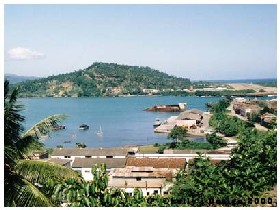|
BARACOA
 Baracoa was the first village founded by the Spanish in 1511, and five centuries later is still standing as the main tourist attraction of Guantánamo.
Its name is of Arauaco origin and means “existence of the sea”. It is also called the Landscape City, Rainy City, Mountain City, Water City (Ciudad Paisaje, Ciudad de las Lluvias, Ciudad de las Montañas, Ciudad de las Aguas), and is the capital of wood, coconuts and cacao.
Its natural environment, enveloped in mountain massifs adorned by a vigorous vegetation of virgin forests, full of native flora and fauna, with crystalline rivers and beaches surrounded by mangroves, almond and coconut trees, gives it a distinctive seal, if we compare it with the rest of the country.
Baracoa was the first village founded by the Spanish in 1511, and five centuries later is still standing as the main tourist attraction of Guantánamo.
Its name is of Arauaco origin and means “existence of the sea”. It is also called the Landscape City, Rainy City, Mountain City, Water City (Ciudad Paisaje, Ciudad de las Lluvias, Ciudad de las Montañas, Ciudad de las Aguas), and is the capital of wood, coconuts and cacao.
Its natural environment, enveloped in mountain massifs adorned by a vigorous vegetation of virgin forests, full of native flora and fauna, with crystalline rivers and beaches surrounded by mangroves, almond and coconut trees, gives it a distinctive seal, if we compare it with the rest of the country.
For more information:
www.cuba-guantanamo.com
|